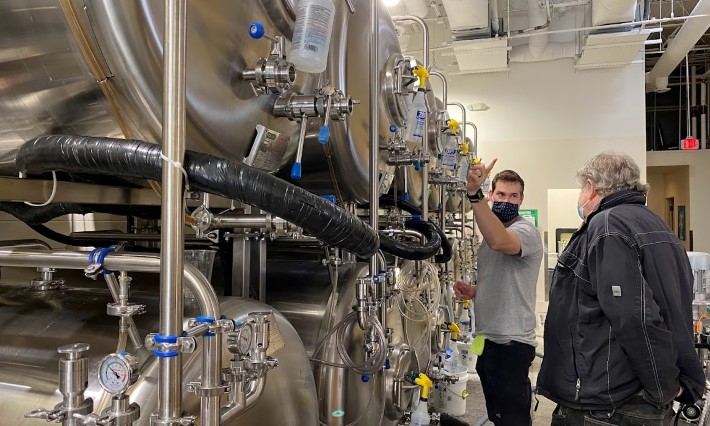If breweries and beer, or craft breweries and craft beer if you are still a member of the movement, are going to save the world they must do better. The story about “How Sexism, Assault Pushed One Woman Out of the Beer Industry” is absolutely gutting.
And a part of the story not to be overlooked is this.
“It’s exhausting to keep telling this fucking story,” (Sarah) Hite says, adding that between 2020 and 2021, she and a trusted industry peer contacted two journalists about her experiences. Hite had given an interview to one of these journalists, but neither published stories about it. She says the reporter who interviewed her eventually stopped communicating with her.
Make time to read the whole story.
#FOODIES
Interview with a master cicerone
So long, Chowhound
There’s this: In his conversation with Em Sauter, master cicerone Shane McNamara says, “I like to think of this journey as the same of what people describe as becoming a ‘foodie.’”
And this: Writing about the announcement that Chowhound website will close next week, Eric Asimov explains that the site was “a neighborhood hangout for food adventurers — chowhounds, (founder Jim) Leff called them, distinguishing them from dilettantish foodies — to indulge their opinionated obsessions among a like-minded community.”
Leff clearly is not pro “foodie.” I admit this is piling on, but there is also this from the foreword of “Foodies: Democracy and Distinction in the Gourmet Foodscape.”
“(The authors) show the pursuit of social status that underlies the false egalitarianism of foodies’ claims to like humble dishes. They know that we are really luxuriating in our sense of entitlement, and that every claim to like simple food is a means of asserting our distinction.”
Does that sound inclusive?
Bonus reading: Leff wrote a series of blog posts about selling Chowhound. Start here.
THE EARLY DAYS
A long conversation with Alan Sprints, who recently announced he will soon close his Hair of the Dog brewery. This: “It was very frustrating that having good beer wasn’t enough. It wasn’t even the second or third most important thing. It was always so frustrating that I had to work so hard, and yet I never was financially very successful. Critical success came early on, and that sustained me for quite a few years, but financial success is the reason you get into business in the first place.”
AUTHENTICITY
Bringing Ancient Beer Back to Life in the Modern World
This is true: “If history, as they say, is told by the victors, rebrews can either reinforce or challenge cultural narratives.” And that may be more important than perfectly replicating the flavor of an ancient.”
“Re-creation beers, whether authentic or not, illuminate our understanding of beer and culture, and show us that we are actually very similar to our ancestors; beer is still a ubiquitous influence in our lives today,” George Schwartz wrote in a Beer History magazine essay in 2013 that examined the importance of authenticity in modern versions of historic ales. “What unifies these projects — whether they are derived from archaeological artifacts, scientific research, or archival documents — is a strong desire to connect with the past.”
PUBS
Drinking with the Simpsons
After you read this new story about the popularity of Moe’s Taverns in South America, consider Samer Khudairi’s essay about how The Simpsons taught him about beer and drinking.
Surveying the literature of the pub
“It has also long been a favored site and subject for English literature. Some writers have dramatized the pub as a male-only space. For others, it has been a staging ground for transgression, where the norms of behavior break down. The pub has meant shame, dissolution, pleasure, companionship, and the artifice of companionship. A mutable mini-England on every high street.”
FUTURE READING
The North American Guild of Beer Writers announced the 2022 “diversity in beer writing” grant recipients, as well as the topics each of them will be writing about. Cool stuff.


